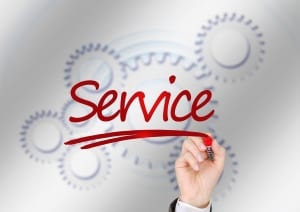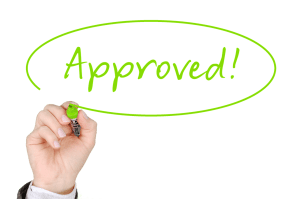9 Tips To Improve Your Customer Service

So what does excellent customer service look like? Check out some of the top ways to incorporate typical company characteristics and techniques into your company processes.
1. Become an expert
Nobody likes a know-it-all, but when your company displays knowledge and expertise in a product or service, you can give precise and specific solutions to their issues. If the customer has to go through five different people to have a query resolved, they will not be happy. It’s also essential to have a troubleshooting or FAQ section on your website that can help in the first instance. If a customer can resolve an issue without needing to speak to someone, the more likely they’ll return.
2. Empathy
Companies should not act like robots. People want to talk to someone that understands their issues. To build a strong relationship with consumers, your team needs to be active listeners and establish a common ground.
3. Be personable
As mentioned before, customers want to be able to communicate with a human. Contact details should be clearly available on your website. If possible, integrate an option such as live chat to help people get answers quickly and easily without picking up the phone. This function can also help convert people. Suppose they have any immediate questions about an item. In that case, they’re less likely to leave the site to go and compare the information.
To help make your staff more personable, allow then to incorporate their personality into the customer experience while staying on brand. This is also important for any communication type, such as social media, live chats, and phone conversation. Consumers like to feel the personality of the brand and its staff, so they know they’re not buying from a faceless entity.
4. Clear communication
In short, don’t waffle or hit customers with sales jargon when they have an issue! If they contact customer services, it’s typically because they have questions or queries regarding an order. So don’t avoid the problem, just get straight to it and communicate clearly to resolve issues. If this does not happen, you could risk losing the customer and receive a request for a refund, as the issue was not resolved.
5. Flexible
The saying ‘the customer is always right’ is mostly true. However, this is only possible if your company is flexible. Adapting to different situations is vital for all team members. Unfortunately, some people try their luck when querying or communicating issues. The key to customer service excellence is to remain level-headed and calm. This can be easier said than done. However, investing in good training for your teams will help them tackle different scenarios and put their skills into practice.
6. Open to feedback
No company is perfect. While you may have a good reputation for excellent customer service, there’s always more than can be done to improve it. One of the best ways to ensure improvement is to be receptive to feedback. Of course, you may get the odd discrepancy in negative feedback. Still, constructive criticism is always important to take on board. A good way to collate feedback and reviews is to conduct customer satisfaction surveys. These will highlight areas of improvement and tackle any lingering issues that customers have, however small.
7. Listen to staff
One of the most significant aspects that can help improve customer service is by listening to your staff. They are the people face to face with the consumer and experiencing the issues they face. By collating staff feedback and frustrations they have with delivering good customer service, you can create a plan to implement changes. Staff may have various input from requiring more training on products to having insufficient authority to issue refunds, which hold the process up. Looking at each area and determining what can make the customer experience better will help consumers and staff in the long term.
8. Act on your promises
Getting feedback from customers and staff is all well and good, but what are you going to do about it. A company that says they’ll change and fails to doesn’t hold onto a good reputation for long. Act on your promises and give solutions to issues that are affecting the customer journey. In some cases, it may not be possible to implement changes straight away. Still, it’s also important to communicate this to customers and staff. An announcement such as ‘you told us this, and we’re working towards making it possible’ is a great way to let people know you’re listening but can’t do it straight away. If feedback is ignored, then it shows.
9. Don’t bombard the customer with surveys
While it’s essential to try and get feedback from customers, some companies make the mistake of bombarding customers with surveys about their experience. There are many ways that consumers can give reviews, including incorporating tools to encourage feedback on specific products. Giving customers the option to leave feedback is crucial, and if they say no – don’t push it. One of the best ways to drum up engagement is via social media. People love to suggest brands and let others know about their experiences, so be sure to interact and engage with others on your platforms to encourage tags and mentions in consumer social posts.
These are just some of the ways to improve your overall customer service experience and success rates. By implementing good practices and remaining consistent and on-brand, you will ensure customers get the information they require without confusion and hassle. Does your company cover the above?






